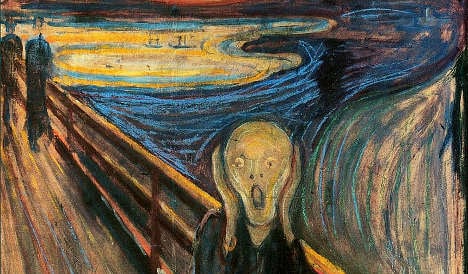Picasso's portrait of Dora Maar, estimated to sell for $20 million to $30 million at Sotheby's on Wednesday, and Cezanne's "Joueurs de Cartes," estimated to fetch $15 million to $20 million at Christie's on Tuesday, are other highlights of the Impressionist and modern sales.
"The Scream" is one of four versions of a work that symbolized with its nightmarish central figure and lurid colors the existential angst and despair of the modern age.
Simon Shaw, head of the Impressionist and modern department at Sotheby's, said it was "very hard to estimate" the value of the work being sold by Norwegian Petter Olsen, whose father was a friend and supporter of the artist.
Some believe bidding could go beyond $80 million, taking the work into the company of just eight other paintings in that price range.
On two occasions, other versions of the painting have been stolen from museums, although both were recovered. Copies have adorned everything from student dorms to tea mugs and the work is one of the few known equally to art experts and the general public alike.
The following week will see post-war and contemporary sales. Among the highlights will be Mark Rothko's 1961 painting "Orange, Red, Yellow" at Christie's on May 8th, with an estimate of $35 million to $45 million.
A Jackson Pollock work, "No. 28," also from the collection of philanthropist David Pincus, is estimated to sell for $20 million to $30 million. Christie's says "there has not been a Jackson Pollock of this quality or scale at auction since 1997."
On May 9th, Sotheby's will offer a strong focus on Pop Art, with Roy Lichtenstein's "Sleeping Girl" from 1964 estimated at $30 million to $40 million, and Andy Warhol's "Double Elvis" estimated at $30 million to $50 million.
The headliner, though, could be Francis Bacon's "Figure Writing Reflected in Mirror" from 1976.
Sotheby's said the painting, estimated at $30 million to $40 million, is "one of the artist's most important paintings ever to come to auction, and is a summation of his simultaneously painterly and intellectual genius."



 Please whitelist us to continue reading.
Please whitelist us to continue reading.
Member comments